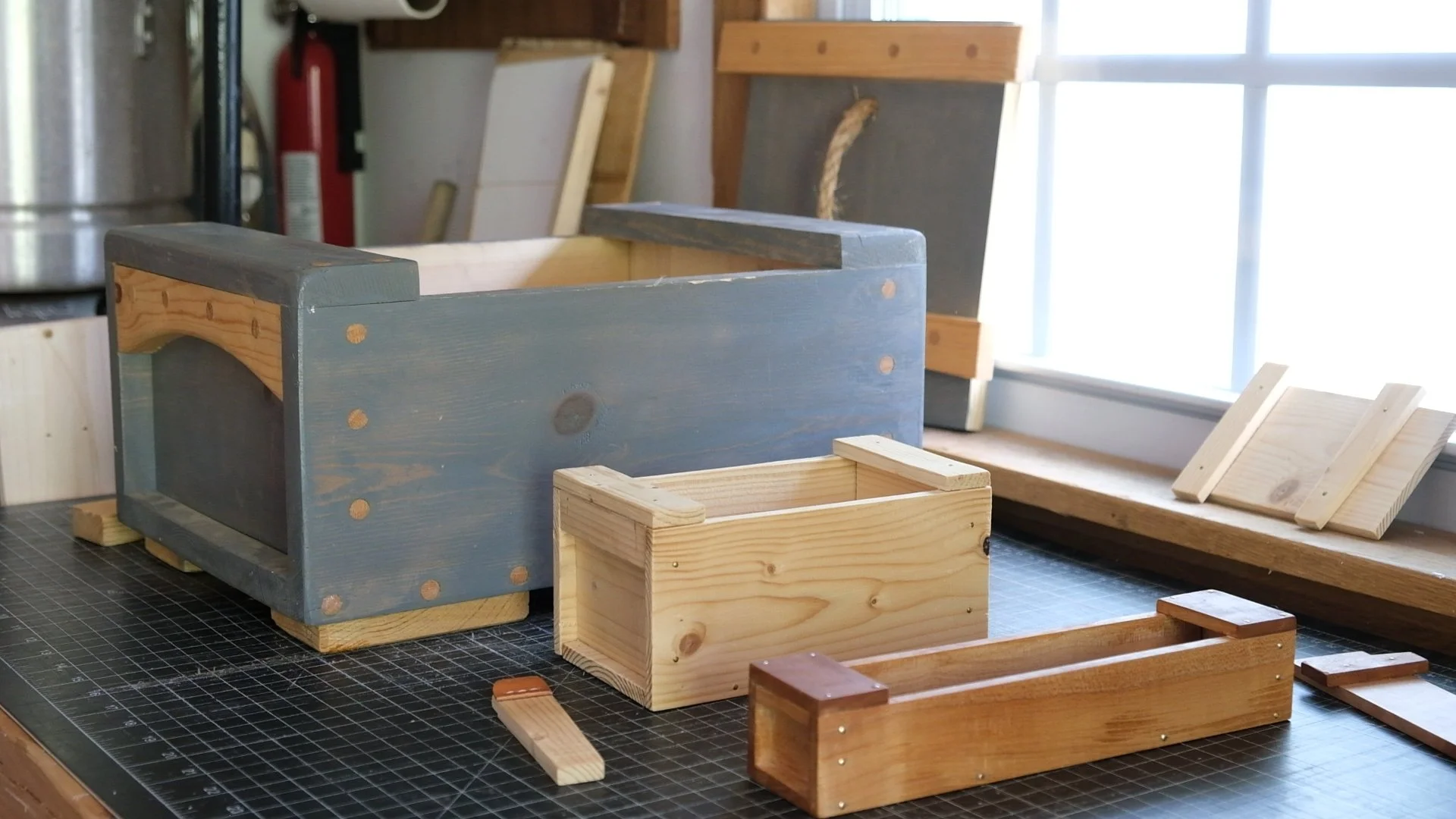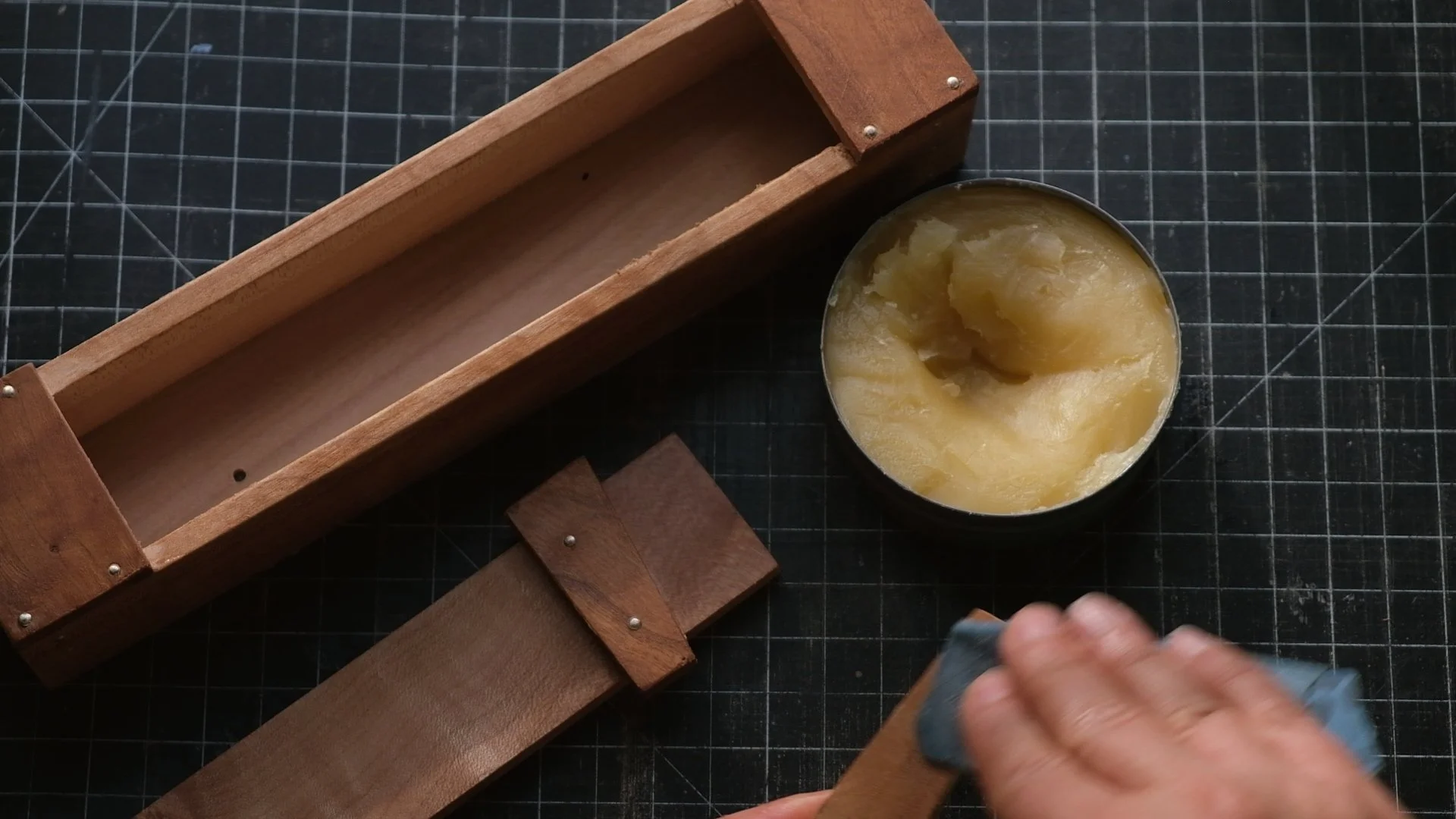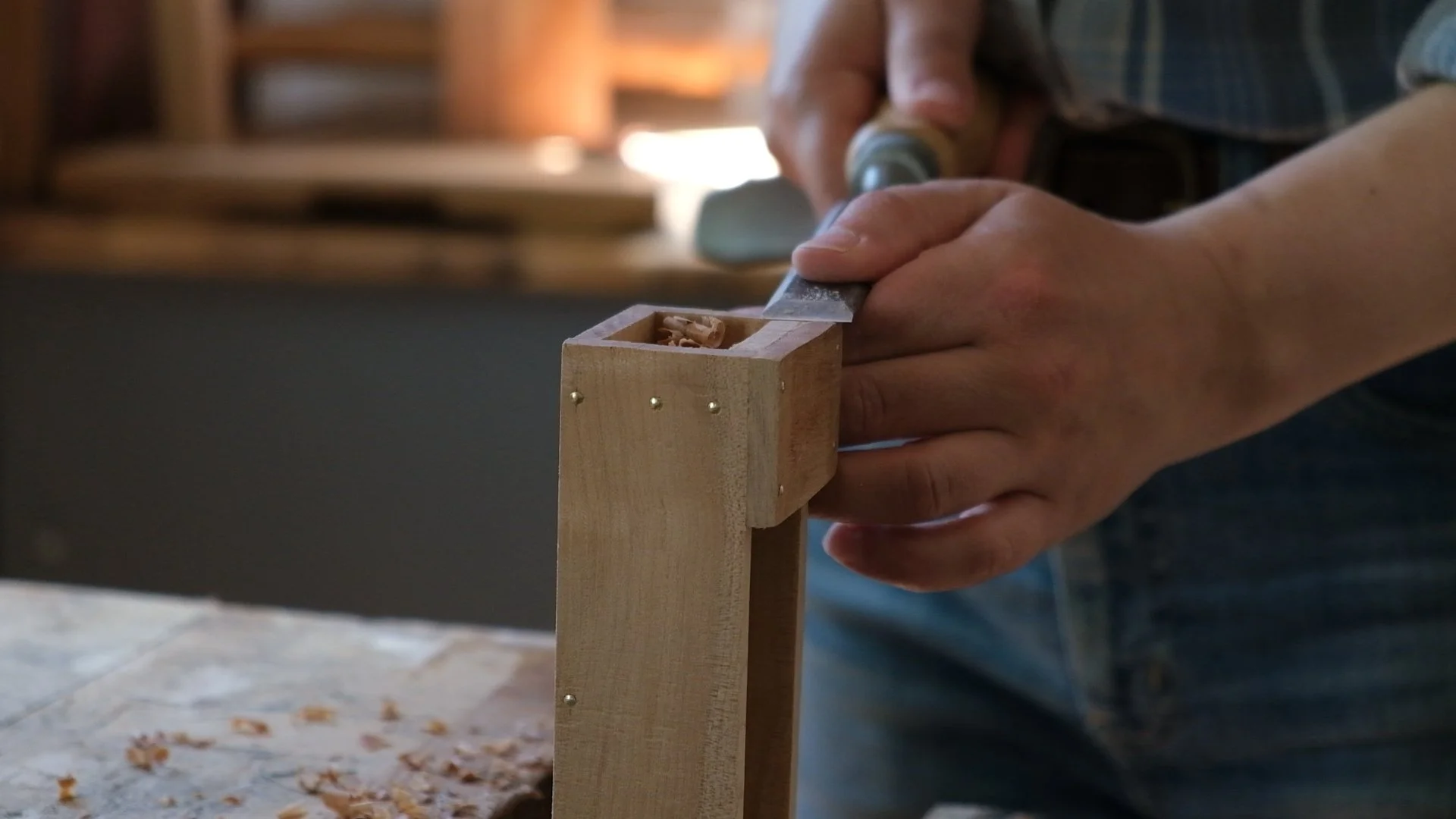The Ingenious Design of the Japanese Toolbox (And Why I Keep Building Them)
There’s something deeply satisfying about a well-designed wooden box—especially one that doesn’t rely on hardware. That’s why I’ve built multiple versions of the Japanese toolbox, a traditional design that’s both simple and brilliant.
What Makes It Special?
The defining feature is the lid: it slides under the sides and locks in place with a wedge. No hinges, no screws—just wood and friction. It’s a design that’s been used by Japanese carpenters for centuries, originally meant for transporting tools to job sites. But really, it works for anything: tools, pencils, random workshop clutter.
I’ve built a few of these over the years, experimenting with proportions and materials. My first was a chunky pine version (with maybe too many screws). Later, I made a bare-bones one from resawn 2x4s. Most recently, I built a small maple-and-cherry pencil box—just big enough for a handful of pencils, with a contrasting wood wedge.
Why This Design Works
No hardware needed – Just wood, glue, and (optionally) a few nails.
Adjustable proportions – Long and narrow for tools, or compact for small items.
The wedge lock – Simple, but effective. (Though I did learn to make the wedge slightly oversized—wood moves over time.)
Built-in handles – The overhanging sides make it easy to carry.
What I Learned
The lid length is critical—too short and it won’t stay put, too long and it won’t fit. I aim for about 1/4" of play on each side.
Hardwood vs. softwood changes the feel. Pine is forgiving and rustic; maple and cherry give a more refined look.
A leather tab on the wedge helps keep it from getting lost (a problem I’ve had before).
Wood Finish
Since this is a piece that’ll get handled often—opening, closing, grabbing pencils—I wanted a finish that feels great and protects the wood without being fussy. That’s why I used our 100% Tung Oil & Beeswax Polish. It soaks in just enough to deepen the grain, leaves a smooth satin feel, and wears nicely over time. Plus, it’s all-natural, so no weird fumes or sticky residue.
Watch the Build
If you’re curious about the details, I put together a video walking through the process—especially how to get the wedge and lid just right.
👉 [Watch the Japanese Toolbox Build Here]
Final Thought
This is one of those designs that’s almost too simple—until you build one and realize how clever it really is. If you’ve got some scrap wood and a few hours to spare, I’d highly recommend trying it.
Which style would you go for? A long carpenter’s box, a chunky storage crate, or a tiny desk organizer? Let me know—I might just build another one.


